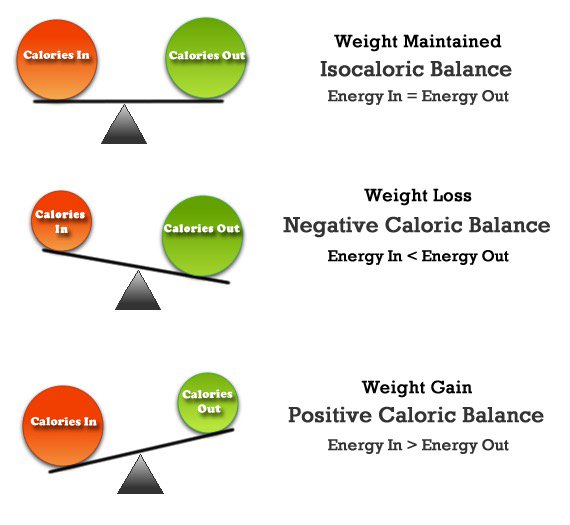If you’re looking to eliminate belly fat, you’re taking a crucial step towards better health. Visceral fat surrounding the abdominal organs presents the most significant health hazard and is often the primary aesthetic concern.
Research conclusively links excess abdominal fat to numerous life-threatening conditions, regardless of overall body fat percentage (1). Visceral fat accumulation significantly increases the risk of:
- Cardiovascular disease and heart attacks
- Stroke
- Insulin resistance and type 2 diabetes
- Colorectal cancer
- Sleep apnea
- Hypertension
- Premature mortality from various causes
Achieving a flat stomach transcends aesthetics; it’s a vital investment in your longevity and quality of life.
Assessing your abdominal fat-related health risk is straightforward and requires no specialized testing. Your waist circumference provides a reliable indicator (3):
- Women: ≥35 inches indicates elevated risk
- Men: ≥40 inches suggests potential health concerns
Initiating fat reduction strategies promptly can expedite your journey to improved health and a more streamlined physique. But how long does achieving a flat stomach take, and what evidence-based methods are most effective?
Level Up Your Fitness: Join our 💪 strong community in Fitness Volt Newsletter. Get daily inspiration, expert-backed workouts, nutrition tips, the latest in strength sports, and the support you need to reach your goals. Subscribe for free!
Realistic Timeframes for Achieving a Flat Stomach
The duration required to attain a flat stomach varies significantly among individuals due to multiple factors. While some variables are within your control, others are influenced by genetics and physiology.
Key determinants of your fat loss timeline include:
Initial fat volume
A higher starting body fat percentage typically necessitates a longer reduction period. Fat loss occurs systemically; spot reduction is physiologically impossible.
Adherence and consistency
Strict adherence to a calorie-controlled diet and regular exercise regimen accelerates progress. Inconsistency in either domain can significantly impede results.
Genetic predisposition
While genetics influence fat distribution patterns (android vs. gynoid), they do not preclude successful fat loss. Genetic factors may affect the rate of progress but not the ultimate outcome.
Prompt initiation of a fat loss program is crucial. Delaying action allows further fat accumulation, potentially extending the time required to achieve your goal.
Related: Body Type Quiz: Identify Your Somatotype – Endomorph, Ectomorph, or Mesomorph
Evidence-Based Strategies for Abdominal Fat Reduction
Implement these scientifically-supported methods to optimize your journey towards a flatter stomach:
1. Establish a sustainable caloric deficit
Fat loss fundamentally requires a negative energy balance. Determine your Total Daily Energy Expenditure (TDEE) using a validated online calculator, then create a deficit of 300-500 calories daily for sustainable fat loss.
Your TDEE comprises:
- Basal Metabolic Rate (BMR): Energy expended at rest
- Thermic Effect of Activity (TEA): Calories burned during physical exertion
- Thermic Effect of Food (TEF): Energy used in digestion and nutrient processing
Meticulously track your food intake to ensure adherence to your calculated caloric target.
Related: Calorie Deficit Calculator
2. Prioritize nutrient-dense, satiating foods
While a caloric deficit is paramount for fat loss, food quality significantly impacts adherence and overall health. Opt for foods with high nutrient density and satiety value to mitigate hunger and optimize nutritional intake.
Emphasize consumption of:
- Lean proteins (e.g., poultry, fish, legumes)
- Fibrous vegetables (e.g., cruciferous vegetables, leafy greens)
- Whole grains
- Fruits (in moderation)
- Healthy fats (e.g., avocados, nuts, seeds)
These foods promote satiety, support metabolic health, and provide essential micronutrients crucial for overall well-being.
Additionally, addressing digestive issues can enhance abdominal aesthetics. Consider:
- Optimizing hydration
- Experimenting with elimination diets to identify food sensitivities
- Reducing sodium and refined sugar intake
- Prioritizing sleep hygiene
- Implementing stress management techniques
- Increasing dietary fiber intake
- Incorporating probiotic supplementation
3. Implement a comprehensive exercise regimen
Regular physical activity synergistically enhances fat loss efforts through multiple mechanisms:
Enhanced energy expenditure
Exercise augments your caloric deficit, accelerating fat loss. Increased activity allows for greater dietary flexibility while maintaining a deficit.
Level Up Your Fitness: Join our 💪 strong community in Fitness Volt Newsletter. Get daily inspiration, expert-backed workouts, nutrition tips, the latest in strength sports, and the support you need to reach your goals. Subscribe for free!
Muscle mass preservation
Resistance training mitigates muscle loss during caloric restriction, preserving metabolic rate and body composition.
Improved insulin sensitivity
Exercise enhances cellular glucose uptake, promoting efficient energy utilization and reducing fat storage propensity.
Systemic health benefits
Regular physical activity confers numerous health benefits, potentially offsetting obesity-related risks.
Abdominal muscle development
While spot reduction is impossible, targeted abdominal training can enhance muscle tone, contributing to a flatter appearance as body fat decreases.
Incorporate a combination of resistance training, cardiovascular exercise, and increased non-exercise activity thermogenesis (NEAT) for optimal results.
4. Implement precise progress monitoring
Systematically track your progress to ensure strategy efficacy and facilitate necessary adjustments. While scale weight provides some insight, it’s an imperfect metric due to daily fluctuations and body composition changes.
Implement weekly waist circumference measurements as a more reliable indicator of abdominal fat loss. Consistent reductions in this metric validate your approach; stagnation may necessitate caloric deficit increases or activity level adjustments.
Maintain detailed records to visualize progress and reinforce motivation. Remember that each inch lost correlates with improved health outcomes.
5. Cultivate long-term adherence
Sustainable fat loss requires consistent implementation of evidence-based strategies. Optimize adherence by:
- Selecting enjoyable, nutritious foods that align with your preferences
- Choosing exercise modalities you find engaging and rewarding
- Focusing on habit formation rather than arbitrary timelines
- Recognizing that each healthy choice contributes to your overall goal and health improvement
Commit to long-term lifestyle modification rather than seeking rapid, unsustainable results. Consistency in your approach will yield the most significant and enduring outcomes.
How to Get Abs
For those aspiring beyond a flat stomach to develop defined, visible abdominal muscles, the journey extends further. The good news: your current fat loss efforts lay a strong foundation for this goal.
The primary differentiator between a flat stomach and visible abs lies in your body fat percentage. As you continue to reduce overall body fat, abdominal definition becomes increasingly apparent. Concurrent abdominal-specific training can enhance muscle thickness, further improving visibility.
To transition from a flat stomach to defined abs:
- Optimize body fat reduction: Further refine your nutrition plan, potentially decreasing caloric intake slightly while maintaining adequate protein to preserve muscle mass.
- Intensify abdominal training: Incorporate progressive, resistance-based abdominal exercises to stimulate muscle hypertrophy.
- Maintain overall muscle mass: Continue full-body resistance training to support metabolic rate and overall body composition.
- Enhance cardiovascular fitness: Integrate high-intensity interval training (HIIT) to accelerate fat loss and improve muscular definition.
- Optimize recovery: Prioritize sleep and stress management to support hormonal balance conducive to fat loss and muscle preservation.
For an in-depth strategy on developing exceptional abdominal definition, refer to our comprehensive guide to achieving washboard abs.
Remember, visible abdominal muscles result from a combination of low body fat percentage and well-developed core musculature. Genetics influence fat distribution and muscle insertions, affecting the specific look of your abs, but consistent effort can yield impressive results for most individuals.
Flat Stomach – A Holistic Approach to Long-Term Success
While we can’t provide a universal timeline for achieving a flat stomach, we can confidently assert that dedicated effort yields results, enhancing both aesthetics and health markers.
The most effective approach to attaining and maintaining a flat stomach involves a comprehensive lifestyle modification:
- Nutritional optimization: Implement a sustainable, nutrient-dense eating plan that creates a moderate caloric deficit while supporting overall health and satiety.
- Regular physical activity: Combine resistance training and cardiovascular exercise to optimize body composition, metabolic health, and overall fitness.
- Stress management: Implement strategies to mitigate chronic stress, which can impede fat loss efforts and promote abdominal fat storage.
- Quality sleep: Prioritize consistent, restorative sleep to support hormonal balance, recovery, and overall well-being.
- Consistency and patience: Recognize that sustainable body composition changes require time. Focus on forming healthy habits rather than seeking quick fixes.
Isolated approaches like excessive abdominal exercises or extreme short-term diets are ineffective and unsustainable. True transformation necessitates a holistic lifestyle shift.
To expedite your journey to a flatter, more toned midsection:
- Conduct a thorough assessment of your current dietary habits, identifying areas for improvement.
- Stock your kitchen with nutrient-dense, minimally processed foods to support your nutritional goals.
- Develop a structured meal plan that aligns with your caloric and macronutrient targets.
- Establish a consistent exercise routine, incorporating both resistance training and cardiovascular activities.
- Implement strategies to enhance sleep quality and manage stress effectively.
- Track your progress using multiple metrics (e.g., body measurements, progress photos, strength gains) to maintain motivation and make necessary adjustments.
Conclusion: Empowering Your Transformation
Achieving a flat stomach transcends mere aesthetics; it represents a commitment to improved health, longevity, and overall well-being. While the journey may seem daunting, remember that every positive choice brings you closer to your goal.
Key takeaways for success:
- Embrace patience and consistency, recognizing that sustainable changes take time.
- Focus on forming lifelong healthy habits rather than seeking temporary solutions.
- Celebrate non-scale victories, such as increased energy, improved mood, and enhanced physical performance.
- Seek support from like-minded individuals or professionals to maintain accountability and motivation.
- Remain flexible and willing to adjust your approach based on your body’s responses and changing needs.
Your journey to a flat stomach is a testament to your commitment to self-improvement and health optimization. By implementing the strategies outlined in this guide, you’re not just reshaping your midsection – you’re transforming your entire approach to health and wellness.
Start today: Make one positive change, however small, and build upon it. Your future self will thank you for the investment in your health and well-being. Remember, the path to a flat stomach is a journey of self-discovery, empowerment, and lasting transformation.
As you progress, keep these final thoughts in mind:
- Personalize your approach: While the principles outlined here are universally applicable, the specific implementation may vary based on your individual needs, preferences, and lifestyle.
- Embrace the process: Focus on the daily habits and choices that contribute to your goals, rather than fixating solely on the end result.
- Stay informed: Continue educating yourself about nutrition, exercise, and overall health to make informed decisions and refine your approach over time.
- Be kind to yourself: Recognize that progress is rarely linear. Celebrate your successes, learn from setbacks, and maintain a positive, growth-oriented mindset throughout your journey.
- Share your experience: As you achieve success, consider sharing your story to inspire and motivate others who may be at the beginning of their own transformation.
Remember, achieving a flat stomach is not just about aesthetics – it’s about taking control of your health, boosting your confidence, and improving your quality of life. With dedication, patience, and the right strategies, you can achieve your goals and maintain your results for years to come.
Embark on this journey with enthusiasm and determination. Your commitment to a healthier lifestyle will not only lead to a flatter stomach but also to a more vibrant, energetic, and fulfilling life overall. The power to transform your body and health lies within you – seize it, and let your journey to a flatter stomach become the catalyst for a healthier, happier you.
References:
- British Medical Journal: Excess Belly Fat Linked to A Higher Risk of Early Death Regardless of Total Body Fat (bmj.com)
- PubMed: A Review of The Association Between Abdominal Fat Distribution, Health Outcome Measures, And Modifiable Risk Factors (Pubmed)
- PubMed: A Pooled Analysis of Waist Circumference and Mortality in 650,000 Adults (ncbi.nlm.nih.gov)
- Journal of Obesity: The Role of Exercise and Physical Activity in Weight Loss and Maintenance (ncbi.nlm.nih.gov)
- Nutrients: Dietary Strategies for Weight Loss Maintenance (ncbi.nlm.nih.gov)
















